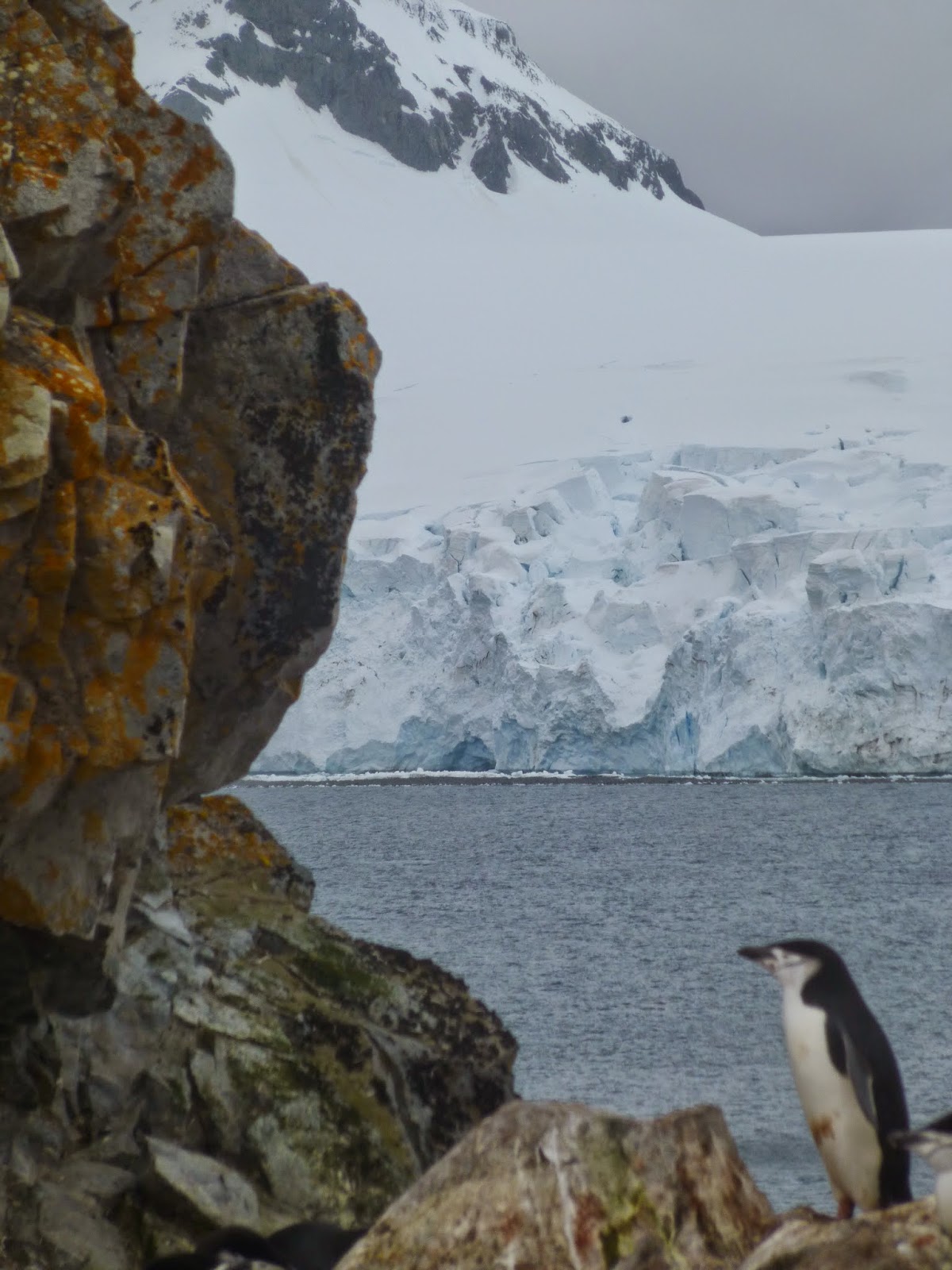The morning sun glistened on the
deep blue waters of the Chilean coast. In
the distance, Cape Horn rose up out of the sea silently observing our navigation. For the first time in days, we were able to
take to the deck and enjoy the scenery, pausing to make images of the hovering
albatross and the stoic mountains in the distance.
Reflection in this moment is
unavoidable and I begin to wonder how this experience has changed me as a
person. My reasons for coming on this
voyage seem as distant as the land itself, and I am profoundly aware of a new
motivation for being here. Slowly I
realize that the lessons Antarctica taught me were less about science, nature,
facts and figures, and more about the communication of ideas and information.
Communication is all around us.
As teachers, our job is to take
these grandiose concepts, these foreign concepts, and find ways to communicate
our experience to our students. Through
community outreach, we will also have opportunities to convey information to a
wider range of people in the field of education—administrators, professors,
pre-service teachers, and community leaders.
The challenge becomes one of effectively using language to bring this experience
to life for people who are so far removed from it that it seems impossible to
understand.
How can we use language to pique
the interest of our students and other community members so that they feel
connected to the natural world around us and invested in the future of our
planet? How can the art of language help
us paint pictures in people’s minds so that they authentically care about our
environment? What role does rhetoric and
persuasive language play in convincing policy makers and entrepreneurs to
consider ecological sustainability in their decision-making processes?
These questions, and more, begin
to rise like mountains out of the ocean.
Seemingly insurmountable, the
complications of personal agendas, economic decision-making, political tides,
and the rigidity of traditional ways of thinking and being, are the next
mountains to climb. The culture where I
live is generally oriented toward the safety and comfort of routine and linear
thinking. We tend to approach life in a
conventional way; from birth to death, we spend our lifetimes functioning in
the unnatural predictability of societal expectations.
While all of these cultural norms
are fine and good--even, in some respects, profound and life-changing--they can be
very distracting from the purity of living a human existence. Of connecting with the world around us, with
nature, with our own selves, of growing from discomfort and welcoming change as
a way to revitalize and rejuvenate.
Upon returning, I know I will be
asked the question, “So what did you take away from your experience in
Antarctica?”
The answer: It’s not what I “took away” from the experience;
it is what I decided to leave behind.
I left behind conventional ways
of approaching academic topics.
I left behind notions of
disconnect between the arts and the sciences.
I left behind the fear of
divergent thinking.
And I left behind the illusion of
comfort in predictability and routine.
As with any profound travel experience,
Antarctica has challenged me to learn and grow in ways I never thought possible. It has pushed me beyond my comfort zone, away
from the warmth of home and my daily life, relocating me to the furthest
reaches of the earth. In this isolation,
I discovered a deep personal connection to the land of Antarctica, to the
wildlife that calls this place home, and to the greater ecosystem that operates
locally and globally.
The memories of this adventure
will last a lifetime, and I anticipate that the friendships forged aboard this
ship will also endure that long. It is
my hope that somehow you, as well, have been changed; inspired perhaps to be
your best self, discover new horizons, or seek out avenues for creativity and
innovation in your own locale.
The trip may be over, but the
journey is never done. With Antarctica
behind me, my gaze shifts ahead, in search of the next big adventure, the next
challenge, and the next horizon.
Until our paths serendipitously cross again…enjoy the
journey!
 |
| Cape Horn, Chile Photo by: Rodolfo Werner |
 |
| Sei Whale Underwater - Approximately 40 Feet Long |
 |
| A Rare Sighting of a Group of Sei Whales! |






























